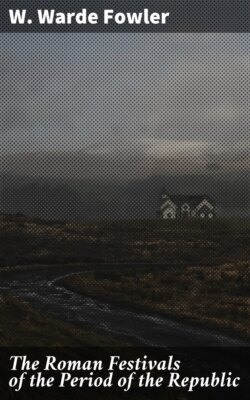Читать книгу The Roman Festivals of the Period of the Republic - W. Warde Fowler - Страница 27
На сайте Литреса книга снята с продажи.
XVII Kal. Mai. (April 15). NP.
ОглавлениеTable of Contents
FORD[ICIDIA][215]. (CAER. MAFF. VAT. PRAEN.)
This is beyond doubt one of the oldest sacrificial rites in the Roman religion. It consisted in the slaughter of pregnant cows (hordae or fordae), one in the Capitol and one in each of the thirty curiae[216]; i.e. one for the state and the rest for each of its ancient divisions. This was the first festival of the curiae; the other, the Fornacalia, will be treated of under February 17. The cows were offered, as all authorities agree, to Tellus[217], who, as we shall see, may be an indigitation of the same earth power represented by Ceres, Bona Dea, Dea Dia, and other female deities. The unborn calves were torn by attendants of the virgo vestalis maxima from the womb of the mother and burnt[218], and their ashes were kept by the Vestals for use at the Parilia a few days later[219]. This was the first ceremony in the year in which the Vestals took an active part, and it was the first of a series of acts all of which are connected with the fruits of the earth, their growth, ripening and harvesting. The object of burning the unborn calves seems to have been to procure the fertility of the corn now growing in the womb of mother earth, to whom the sacrifice was offered[220].
Many charms of this sacrificial kind have been noticed by various writers; one may be mentioned here which was described by Sir John Barrow, when British Ambassador in China in 1804. In a spring festival in the temple of Earth, a huge porcelain image of a cow was carried about and then broken in pieces, and a number of small cows taken from inside it and distributed among the people as earnests of a good season[221]. This must be regarded as a survival of a rite which was no doubt originally one of the same kind as the Roman.
